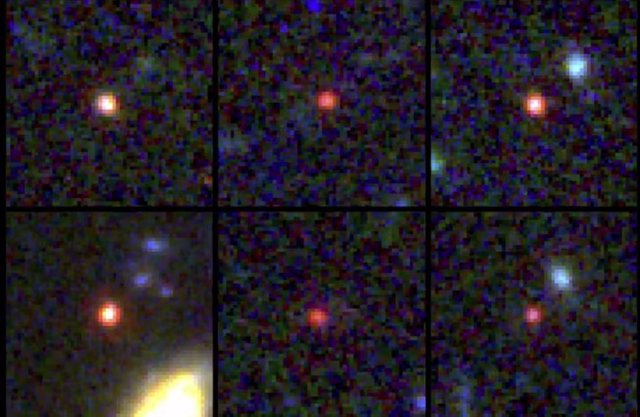13 Apr. (EUROPE PRESS) –
The Webb Space Telescope appears to be finding multiple galaxies that they became too massive too soon after the Big Bang, if the standard model of cosmology is to be believed.
In a study published in nature astronomyMike Boylan-Kolchin, associate professor of astronomy at the University of Texas at Austinfinds that six of the oldest and most massive candidate galaxies observed by Webb so far contradict prevailing thinking in cosmology.
That’s because other researchers estimate that each galaxy looks 500 million to 700 million years after the Big Bang, but measures more than 10 billion times the mass of our sun. One of the galaxies even appears to be more massive than the Milky Way, despite the fact that our own galaxy had billions of years more to form and grow.
“If the masses are right, then we are in uncharted territory,” Boylan-Kolchin said. it’s a statement. “We will need something very new about galaxy formation or a modification of cosmology. One of the more extreme possibilities is that the universe was expanding faster shortly after the Big Bang than we predict, which could require new forces and particles.”
For galaxies to form so quickly and to such a size, they would also have to convert almost 100% of their available gas into stars.
“Typically, we see a maximum of 10% of the gas turned into stars,” Boylan-Kolchin said. “So while converting 100% gas to stars is technically just on the edge of what’s theoretically possible, actually this would require something to be very different from what we expect.”
Webb has presented astronomers with a disturbing dilemma. If the masses and time since the Big Bang for these galaxies are confirmed, fundamental changes to the reigning model of cosmology, the so-called dark energy + cold dark matter paradigm, may be necessary, which has guided cosmology since the late from the 1990s. If there are other, faster ways to form galaxies than the pradigm allows, or if there really was more matter available to form stars and galaxies in the early universe than previously believed, astronomers would have to change their prevailing thinking.
The times and masses of the six galaxies are preliminary estimates and will need follow-up confirmation with spectroscopy, a method that splits light into a spectrum and analyzes the brightness of different colors. Such an analysis could suggest that central supermassive black holes, which could heat surrounding gas, they may be making galaxies brighter to make them appear more massive than they really are. Or perhaps the galaxies are actually seen much later than originally estimated due to dust making the color of the galaxy’s light redder, giving the illusion of being more light-years away and therefore so much further back in time.
The galaxy data came from the Cosmic Evolution Early Release Science Survey (CEERS), a multi-institution JWST initiative led by UT Austin astronomer Steven Finkelstein.





![[Img #74692]](https://thelatestnews.world/wp-content/uploads/2024/12/What-do-11-and-12-year-old-boys-and-girls-150x150.jpg)




![[Img #74692]](https://thelatestnews.world/wp-content/uploads/2024/12/What-do-11-and-12-year-old-boys-and-girls-300x200.jpg)

